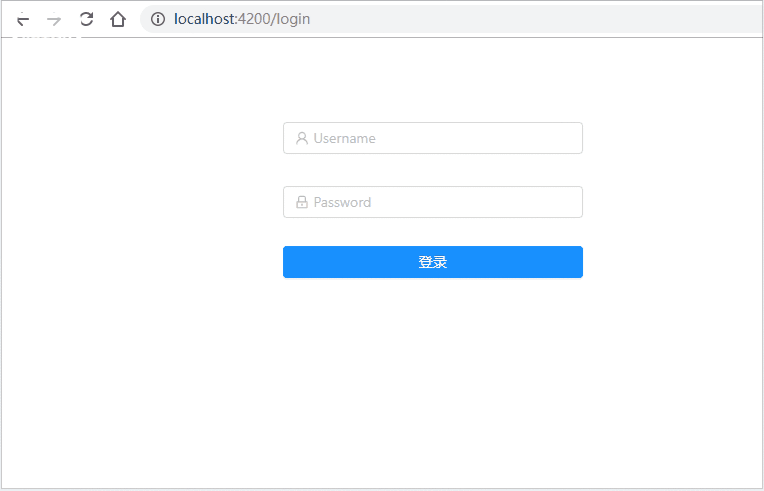您好,登錄后才能下訂單哦!
您好,登錄后才能下訂單哦!
本篇文章為大家展示了Angular8路由守衛的原理是什么,內容簡明扼要并且容易理解,絕對能使你眼前一亮,通過這篇文章的詳細介紹希望你能有所收獲。
路由守衛
守衛,顧名思義,必須滿足一定的條件得到許可方可通行,否則拒絕訪問或者重定向。Angular中路由守衛可以借此處理一些權限問題,通常應用中存儲了用戶登錄和用戶權限信息,遇到路由導航時會進行驗證是否可以跳轉。
4種守衛類型
按照觸發順序依次為:canload(加載)、canActivate(進入)、canActivateChild(進入子路由)和canDeactivate(離開)。
一個所有守衛都是通過的守衛類:
import { Injectable } from '@angular/core';
import {
CanActivate,
Router,
ActivatedRouteSnapshot,
RouterStateSnapshot,
CanActivateChild,
CanLoad,
CanDeactivate
} from '@angular/router';
import { Route } from '@angular/compiler/src/core';
import { NewsComponent } from '../component/news/news.component';
@Injectable({ providedIn: 'root' })
export class AuthGuard implements CanActivate, CanActivateChild, CanLoad, CanDeactivate<any> {
constructor(
private router: Router
) {
}
canActivate(route: ActivatedRouteSnapshot, state: RouterStateSnapshot): boolean {
// 權限控制邏輯如 是否登錄/擁有訪問權限
console.log('canActivate');
return true;
}
canDeactivate(
component: NewsComponent,
currentRoute: ActivatedRouteSnapshot,
currentState: RouterStateSnapshot,
nextState: RouterStateSnapshot) {
console.log('canDeactivate');
return true;
}
canActivateChild() {
// 返回false則導航將失敗/取消
// 也可以寫入具體的業務邏輯
console.log('canActivateChild');
return true;
}
canLoad(route: Route) {
// 是否可以加載路由
console.log('canload');
return true;
}
}app-routing.module.ts
import { NgModule } from '@angular/core';
import { Routes, RouterModule } from '@angular/router';
import { ErrorComponent } from './error/error.component';
import { AuthGuard } from './core/auth-guard';
const routes: Routes = [
// 一般情況很少需要同時寫多個守衛,如果有也是分開幾個文件(針對復雜場景,否則一般使用canActivated足夠)
{
path: '',
canLoad: [AuthGuard],
canActivate: [AuthGuard],
canActivateChild: [
AuthGuard
],
canDeactivate: [AuthGuard],
loadChildren: () => import('./pages/pages.module').then(m => m.PagesModule)
},
{
path: 'error',
component: ErrorComponent,
data: {
title: '參數錯誤或者地址不存在'
}
},
{
path: '**',
redirectTo: 'error',
pathMatch: 'full'
}
];
@NgModule({
imports: [RouterModule.forRoot(routes)],
exports: [RouterModule]
})
export class AppRoutingModule { }使用場景分析
1.canLoad
默認值為true,表明路由是否可以被加載,一般不會認為控制這個守衛邏輯,99.99%情況下,默認所有app模塊下路由均允許canLoad
2.canActivate
是否允許進入該路由,此場景多為權限限制的情況下,比如客戶未登錄的情況下查詢某些資料頁面,在此方法中去判斷客戶是否登陸,如未登錄則強制導航到登陸頁或者提示無權限,即將返回等信息提示。
3.canActivateChild
是否可以導航子路由,同一個路由不會同時設置canActivate為true,canActivateChild為false的情況,此外,這個使用場景很苛刻,尤其是懶加載路由模式下,暫時未使用到設置為false的場景。
4.CanDeactivate
路由離開的時候進行觸發的守衛,使用場景比較經典,通常是某些頁面比如表單頁面填寫的內容需要保存,客戶突然跳轉其它頁面或者瀏覽器點擊后退等改變地址的操作,可以在守衛中增加彈窗提示用戶正在試圖離開當前頁面,數據還未保存 等提示。
場景模擬
登錄判斷
前期準備:login組件;配置login路由
因為login是獨立一個頁面,所以app.component.html應該只會剩余一個路由導航
<!-- NG-ZORRO --> <router-outlet></router-outlet>
取而代之的是pages.component.html頁面中要加入header和footer部分變為如下:
<app-header></app-header> <div nz-row class="main"> <div nz-col nzSpan="24"> <router-outlet></router-outlet> </div> </div> <app-footer></app-footer>
app-routing.module.ts 中路由配置2種模式分析:
// 非懶加載模式
import { NgModule } from '@angular/core';
import { Routes, RouterModule } from '@angular/router';
import { ErrorComponent } from './error/error.component';
import { AuthGuard } from './core/auth-guard';
import { LoginComponent } from './component/login/login.component';
import { PagesComponent } from './pages/pages.component';
import { IndexComponent } from './component/index/index.component';
const routes: Routes = [
// 一般情況很少需要同時寫多個守衛,如果有也是分開幾個文件(針對復雜場景,否則一般使用canActivated足夠)
{
path: '',
canLoad: [AuthGuard],
canActivate: [AuthGuard],
canActivateChild: [
AuthGuard
],
canDeactivate: [AuthGuard],
component: PagesComponent,
children: [
{
path: 'index',
component: IndexComponent
}
// ...
]
// loadChildren: () => import('./pages/pages.module').then(m => m.PagesModule)
},
{
path: 'login',
component: LoginComponent,
data: {
title: '登錄'
}
},
{
path: 'error',
component: ErrorComponent,
data: {
title: '參數錯誤或者地址不存在'
}
},
{
path: '**',
redirectTo: 'error',
pathMatch: 'full'
}
];
@NgModule({
imports: [RouterModule.forRoot(routes)],
exports: [RouterModule]
})
export class AppRoutingModule { }非懶加載模式下,想要pages組件能夠正常顯示切換的路由和固定頭部足部,路由只能像上述這樣配置,也就是所有組件都在app模塊中聲明,顯然不是很推薦這種模式,切換回懶加載模式:
{
path: '',
canLoad: [AuthGuard],
canActivate: [AuthGuard],
canActivateChild: [
AuthGuard
],
canDeactivate: [AuthGuard],
loadChildren: () => import('./pages/pages.module').then(m => m.PagesModule)
},pages-routing.module.ts
初始模板:
const routes: Routes = [
{
path: '',
redirectTo: 'index',
pathMatch: 'full'
},
{
path: 'index',
component: IndexComponent,
data: {
title: '公司主頁'
}
},
{
path: 'about',
component: AboutComponent,
data: {
title: '關于我們'
}
},
{
path: 'contact',
component: ContactComponent,
data: {
title: '聯系我們'
}
},
{
path: 'news',
canDeactivate: [AuthGuard],
loadChildren: () => import('../component/news/news.module').then(m => m.NewsModule)
},
]瀏覽器截圖:

明明我們的html寫了頭部和底部組件卻沒顯示?
路由的本質:根據配置的path路徑去加載組件或者模塊,此處我們是懶加載了路由,根據路由模塊再去加載不同組件,唯獨缺少了加載了pages組件,其實理解整個并不難,index.html中有個<app-root></app-root>,這就表明app組件被直接插入了dom中,反觀pages組件,根本不存在直接插進dom的情況,所以這個組件根本沒被加載,驗證我們的猜想很簡單:
export class PagesComponent implements OnInit {
constructor() { }
ngOnInit() {
alert();
}
}經過刷新頁面,alert()窗口并沒有出現~,可想而知,直接通過路由模塊去加載了對應組件;其實我們想要的效果就是之前改造前的app.component.html效果,所以路由配置要參照更改:
const routes: Routes = [
{
path: '',
component: PagesComponent,
children: [
{
path: '',
redirectTo: 'index',
pathMatch: 'full'
},
{
path: 'index',
component: IndexComponent,
data: {
title: '公司主頁'
}
},
{
path: 'about',
component: AboutComponent,
data: {
title: '關于我們'
}
},
{
path: 'contact',
component: ContactComponent,
data: {
title: '聯系我們'
}
},
{
path: 'news',
canDeactivate: [AuthGuard],
loadChildren: () => import('../component/news/news.module').then(m => m.NewsModule)
},
]
}
];
這樣寫,pages組件就被加載了,重回正題,差點回不來,我們在登錄組件中寫了簡單的登錄邏輯:
import { Component, OnInit } from '@angular/core';
import { FormGroup, FormControl, Validators, FormBuilder } from '@angular/forms';
import { Router } from '@angular/router';
@Component({
selector: 'app-login',
templateUrl: './login.component.html',
styleUrls: ['./login.component.scss']
})
export class LoginComponent implements OnInit {
loginForm: FormGroup;
constructor(
private fb: FormBuilder,
private router: Router
) { }
ngOnInit() {
this.loginForm = this.fb.group({
loginName: ['', [Validators.required]],
password: ['', [Validators.required]]
});
console.log(this.loginForm);
}
loginSubmit(event, value) {
if (this.loginForm.valid) {
window.localStorage.setItem('loginfo', JSON.stringify(this.loginForm.value));
this.router.navigateByUrl('index');
}
}
}守衛中:
canActivate(route: ActivatedRouteSnapshot, state: RouterStateSnapshot): boolean {
// 權限控制邏輯如 是否登錄/擁有訪問權限
console.log('canActivate', route);
const isLogin = window.localStorage.getItem('loginfo') ? true : false;
if (!isLogin) {
console.log('login');
this.router.navigateByUrl('login');
}
return true;
}
路由離開(選定應用的組件是contact組件):
canDeactivate(
component: ContactComponent,
currentRoute: ActivatedRouteSnapshot,
currentState: RouterStateSnapshot,
nextState: RouterStateSnapshot): Observable<boolean> | Promise<boolean> | boolean {
console.log('canDeactivate');
return component.pageLeave();
}{
path: 'contact',
canDeactivate: [AuthGuard],
component: ContactComponent,
data: {
title: '聯系我們'
}
}pageLeave(): Observable<boolean> {
return new Observable(ob => {
if (!this.isSaven) {
this.modal.warning({
nzTitle: '正在離開,是否需要保存改動的數據?',
nzOnOk: () => {
// 保存數據
ob.next(false);
alert('is saving');
this.isSaven = true;
},
nzCancelText: '取消',
nzOnCancel: () => {
ob.next(true);
}
});
} else {
ob.next(true);
}
});
}上述內容就是Angular8路由守衛的原理是什么,你們學到知識或技能了嗎?如果還想學到更多技能或者豐富自己的知識儲備,歡迎關注億速云行業資訊頻道。
免責聲明:本站發布的內容(圖片、視頻和文字)以原創、轉載和分享為主,文章觀點不代表本網站立場,如果涉及侵權請聯系站長郵箱:is@yisu.com進行舉報,并提供相關證據,一經查實,將立刻刪除涉嫌侵權內容。